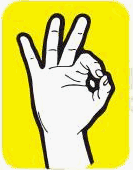 Scott Adams, creator of Dilbert, provocative blogger and friend of the blog, (for my part anyway—he’s the only person in my blogroll feed I don’t know personally.) recently proposed a ‘Ratting System’ that allows employees to anonymously point out their peers’ flaws. That post merged with a lot of other mental systems1 to generate this idea. I’d love feedback on this.
Scott Adams, creator of Dilbert, provocative blogger and friend of the blog, (for my part anyway—he’s the only person in my blogroll feed I don’t know personally.) recently proposed a ‘Ratting System’ that allows employees to anonymously point out their peers’ flaws. That post merged with a lot of other mental systems1 to generate this idea. I’d love feedback on this.
(Part Two: Implications and Part Three: Implementations to follow.)
I think Scott’s idea is perfect–if you turn it inside out. That is, rather than allow employees to complain or troubleshoot, why not get them to focus on the positive things happening around them? I envision a virtual (because I’m a techie) or literal (because I know non-techies exist) dropbox for people to award attaboys.
These commendations could be anything. Note a person’s particular skills. Comment on the extra effort someone put into a project. Draw attention to the wallflower’s quiet consistency. An act, a quality, a system, a trait—all are acceptable targets of praise.
You would want to know who made the comment, but could give an option to keep their identification secret in any discussion. I’m not sure why anyone would be afraid to admit they commended someone, but I’m sure there are situations or personalities that would appreciate the option. Knowing who made the comment is vital, though, because it helps you know the weight of the comment and tells you a lot about your employees. Also, you want to make sure people aren’t praising themselves. Or at least know when they are.
Of course, most companies have some sort of system to allow for positive feedback. The key is to encourage—not allow for—positive feedback. So we’d have make it a functional, simple and rewarding system.
 The results could feed into a system of public recognition ranging from a minor daily award to an official performance review. The possibility of getting the award could increase participation. To further increase participation, only those who have made a comment or a designated number of comments within that day/week/month are eligible for the award.
The results could feed into a system of public recognition ranging from a minor daily award to an official performance review. The possibility of getting the award could increase participation. To further increase participation, only those who have made a comment or a designated number of comments within that day/week/month are eligible for the award.
Alternatively, feedback could be used solely to create informed managers, but you still want to stimulate feedback without forcing it. Tangible benefits such as an extra fifteen minutes of break for every three comments submitted could do the trick. My alma mater had a scheme of allowing casual dress2 during final exams if 75% of the student body completed course evaluations. It only broke down when they raised the standard of casual dress to almost match everyday class dress and revoked casual dress on certain days. Sure, some students didn’t give honest feedback, but I did. And eliminating a standardized questionnaire form would make thoughtless feedback nearly impossible.
Keep it simple and obvious. A box with notecards and pens next to it. A designated email adress. An online form linked to the company intranet. Optional pop-up reminders for task-focused people like me. Casual (read, non-obnoxious) references to it in meetings and decisions.
The system could even be combined with Scott’s negative system to form a Rant and Rave program, but the positive aspect is my primary concern.
- I hope to discuss these in detail at some point, as they seem to be the themes increasingly shaping my thought patterns. You’ll get hints in the coming ‘Implications’ section. ↩
- Everyday class dress was a tie and dress pants or a dress/skirt and nylons, depending on your gender. ↩
